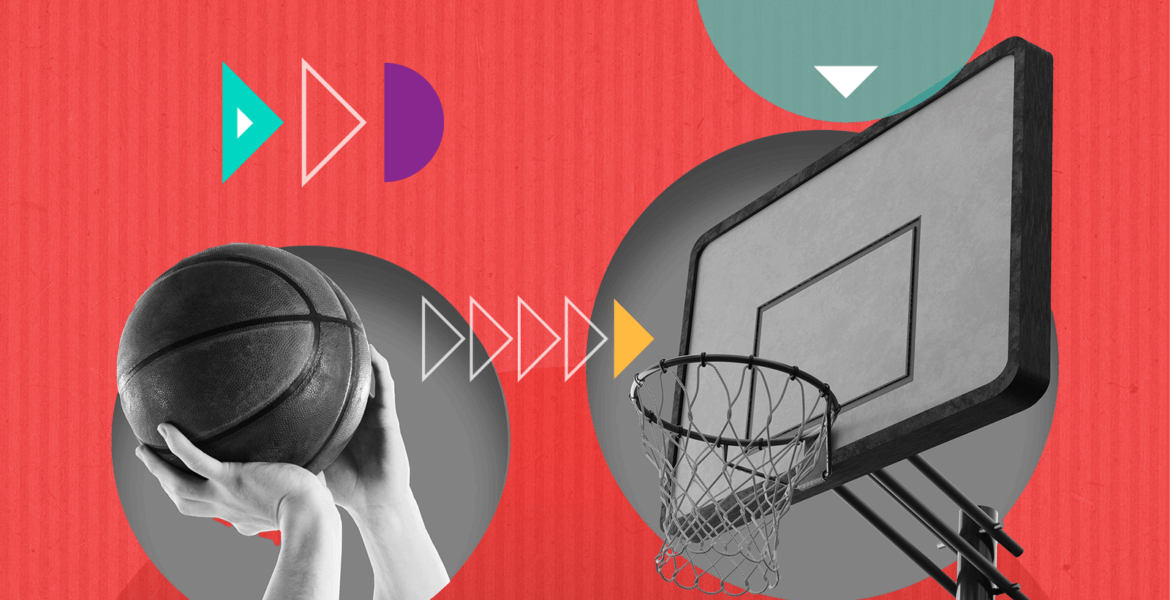By Monte Lutz, Chief Marketing Officer, Samba TV
March Madness just wrapped with the men’s tournament seeing massive increases in viewership for the Final Four, while the women’s tournament saw declines from last year’s historic highs. The sizable viewership throughout the multi-week tournaments afforded huge opportunities for brands looking to reach audiences at scale. However, with more scrutiny on advertising spend and impact this year, brands need quick insights to understand whether their March Madness campaigns were worth the spend so that they may apply those lessons to the next big campaign.
We took a deeper dive into both the advertising campaigns and sponsorship logos displayed throughout the tournament to see the full reach of their investments. For live sports, which prominently feature logos on jerseys, shoes, sports equipment and the stadiums and arenas they play in, calculating the return on the spend includes more than just ad exposure.
March Madness Advertising and Logo Winners
For the men’s tournament, Nike’s Jordan brand and AT&T won the logo and ads contest. AT&T, a prominent tournament sponsor, had both the highest ad viewership and highest logo viewership of any corporate sponsor for the tournament. AT&T’s ads reached 28.4M households throughout the tournament and the AT&T logo was seen more than 4,000 times during the Elite 8 alone (tapering down to 1.7k during the Final Four and Championship game). Home Depot, Capital One, and Geico followed, with their ads reaching 26.0M-27.6M U.S households.
Of note, Nike is the top jersey and sneaker sponsor of the NCAA basketball tournaments, but doesn’t have the singular jersey sponsorship grip. Under Armour and Adidas also made a play, along with Wilson as the named sponsor of the basketballs themselves.
Advertising and logo winners for the women’s tournament differed, with The Home Depot, followed by Nike and AT&T leading, with The Home Depot reaching 10.1M U.S. households. In contrast, Nike had the highest logo exposure, appearing 2,400 times during just the Elite 8, 20% higher than the men’s tournament. Capital One, AT&T, and Geico followed.
In addition to analyzing ad exposure and logo recognition, brands can also measure sentiment for the online conversation about them. Across both tournaments, Geico, LG, and Nabisco generated the most positive online conversation throughout the duration of the tournaments at 22%, 21% and 14% respectively. Of the three corporate champions, Coca-Cola generated the most positive sentiment (10%), followed by AT&T (6%), then Capital One (4%).
So, what does this mean for brands looking to the next big event?
Applying These Lessons to Other Live Sports
In addition to March Madness, there are plenty of other live sports events that feature logo-rich environments where brands can dive in and take advantage, whether it’s NBA, MLB, MLS NASCAR, Formula 1, or the NFL. In addition to apparel and sports equipment sponsorships, virtual ads, and projection mapping in arena locations, provide opportunities for on-court logos and in-arena sponsorships to be picked up by a camera that can be aligned to campaign plans.
We previously conducted this analysis for the Super Bowl, showing that Nike’s “So Win” ad won the day as the most-viewed of any Super Bowl ad, along with the Nike logo receiving the most screen time during the game, with the average viewer seeing the Nike logo 371 times.
Unlike the Super Bowl, March Madness offered brands weeks of exposure across multiple games and teams. For example, logo exposure for Nike was more than 10x higher during March Madness than the Super Bowl. The breadth of the tournament gives advertisers more chances to reinforce brand recall through logo placements, in-game sponsorships, and creative ad strategies.
These kinds of marketing plays can be amplified with paid advertising amid the games, just as Nike did during March Madness and the Super Bowl. The combination of ad exposure and endemic logo exposure may even resonate more with viewers than brands that just run a barrage of 30-second spots.
Gameplan for Live Sports
What’s clear is that live sports remains a huge draw for viewership, and brands are taking notice. While CPMs tied to these events are likely to rise, brands can take advantage of other opportunities to get – and stay – in front of the viewing public. Brands looking to capitalize on high-profile sports broadcasts should consider a multi-event approach—investing not only in the March Madness and the Super Bowl, but other big live sports events such as the NBA and NHL playoffs happening now and in the near future. The right mix of on-air advertising and strategic logo placement can ensure sustained brand visibility throughout the year.
Brands help their cause by combining a memorable ad with frequent logo exposure during the game, connecting the emotive feel of an ad with rational logo recall as well. This is why other opportunities besides commercial air time may play a factor in measuring the impact of an ad, and where the ad industry is getting much better at understanding the overall ROI of the investment. Measuring the combined impact of each is essential in this economic environment, where scrutiny of outcomes is even more important.
About the Author
Monte Lutz is the Chief Marketing Officer at Samba TV, the global leader in AI-powered media intelligence. Previously, he was VP Global Head of Marketing at Adobe and SVP of Marketing at Activision.











